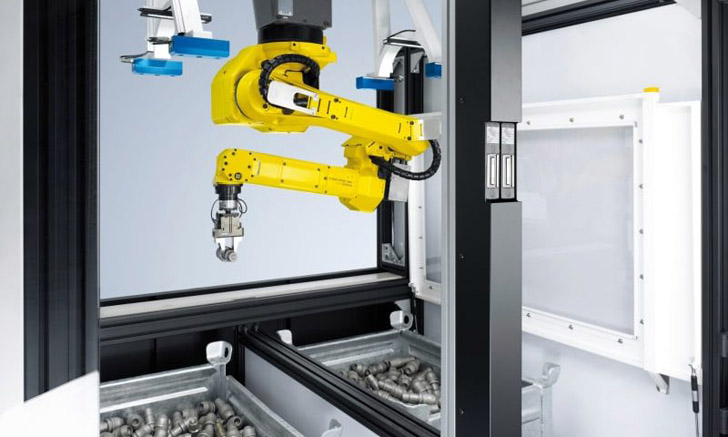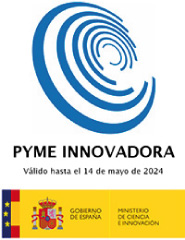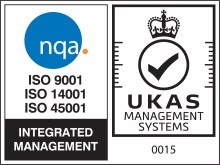
While machine vision is not a new technology, advances in 3D capture bring a new range of possibilities to the industrial sector, focusing on versatility, adaptability, and collaborative operation—hallmarks of the smart 4.0 model.
This branch of machine vision aims to extend the capabilities of 2D vision to new, more demanding applications.
Let’s explore the difference between 3D vision and conventional models, and the significant operational advantages they offer.
Exploring Concepts
“Technological tools” can mean many things, but given the unprecedented digitalization of recent years and a constant shift towards the Industry 4.0 production model, certain technologies stand out for their benefits.
Let’s review some key concepts before analyzing their applications.
Big Data
Big data encompasses all the technology capable of processing massive amounts of data and transforming it into useful information by identifying correlations between variables that would otherwise be impossible to detect. This goes beyond conventional databases and file management systems.
Predicting the effects of weather on food production, forecasting which new products will sell the most, understanding what drives customers to choose certain routes—all of this and more is possible thanks to big data.
By analyzing millions of data points and variables, it’s possible to create simulations that closely resemble reality, providing a clear competitive advantage.
Machine Vision
Machine vision refers to the technology that equips computerized and robotic systems with the ability to see and understand their environment, making them more efficient in performing their tasks.
Since machines become more efficient, with minimal response times, zero error margins, and superior defect detection capabilities, this technology enables automation in any process.
Machine Learning, Deep Learning, and IoT
Technologies like machine learning and deep learning refer to systems based on neural network algorithms or evolutionary equations, present in artificial intelligences, which, simply put, allow technology to learn from the experience gained through historical data.
In other words, we’re talking about technological equipment that learns from its own actions and results, as well as from human activities, enabling them to perform a particular task.
Moreover, they can also share information and communicate with other technological equipment through the Internet of Things (IoT), forming the theoretical basis for building interconnected and highly efficient factories.
Applications of Big Data/Deep Learning in Agro-Food Processes
There are numerous applications for big data and artificial intelligence within the agro-food sector. These tools are integral to the management structure of leading brands. Among many other things, these tools can:
Predict Consumer Behavior:
By analyzing massive amounts of consumption data, it’s possible to predict how customers will react to the introduction of certain products, helping to accurately project the profitability of crops or the impact of changes in product presentation.
Detect Hidden Opportunities:
By analyzing behavior, weather conditions, soil, specimens, and other variables, big data systems can identify unique opportunities. Agro-food companies use these insights to plan their annual production.
Study Harvest Cycles and Create Simulations:
By understanding initial soil conditions, budget, chemical accessibility, genetic data of specimens, and more, it’s possible to create highly accurate simulations of potential harvest outcomes and their acceptance in the market.
These instant simulations help plan optimal production cycles or possible changes in distribution before they occur.
Applications of Machine Vision in Agro-Food Processes
Machine vision is one of the greatest allies of the food sector, enabling the complete automation of food quality control throughout the production process if necessary. This brings useful applications such as:
Field Monitoring:
Machine vision can evaluate virtually any characteristic of crops, such as whether products are growing optimally according to the cultivation timeline, detecting leaf anomalies that suggest pests, determining the ideal maturity level for harvesting, or precisely identifying weeds.
Homogeneous Product Treatment:
By applying artificial intelligence, it’s possible to standardize the treatment of food products. In the fields, this means the precise application of fertilizers and pesticides, even distribution of soil nutrients, and more.
Precise Analysis of Small Products:
Machine vision can incorporate cameras into post-harvest processes to determine whether small products like grains have inconsistencies, whether fruits are the right size, or whether dried foods like nuts are intact and equally proportioned within packages.
Intruder Detection:
During the packaging, transportation, and sanitation of food products, cameras with integrated neural networks can detect potential contaminants on the production line, such as a stone accidentally falling into a grain transport system. The same applies to any product.
Quality Control:
Throughout the production process, before dispatch and commercialization, machine vision systems can detect even the slightest deviations from quality standards and immediately remove them from the production line.
This includes microscopic treatment, such as detecting parasites in the seafood and shellfish industry.
3 Advantages of Big Data and Machine Vision in Agro-Food Processes
Here are some of the most significant advantages of applying technological tools in the agro-food sector:
Cost Reduction:
Automating quality control processes leads to reduced operational costs, labor costs, optimized distribution routes, inventory control, and fewer defective products. This translates into greater profitability.
Significant Reduction in Food Handling:
The food sector heavily relies on quality control, as health concerns are paramount to consumers and directly impact a brand’s reputation. Reducing the number of operators in quality control while increasing efficiency ensures product safety and minimizes potential losses due to human error.
Improved Decision-Making:
With product traceability, information control, and big data analysis, decisions can be based on precise information, encouraging accurate decision-making thanks to behavior prediction models and activity optimization.
Conclusions
The food sector is not only growing in demand every day, but it is also held to very high-quality standards that must not be compromised. Technological tools are one of the best alternatives for reconciling these two conflicting realities.
For producers at any level, the use of machine vision and big data can be the differentiating factor that allows them to grow in the market and secure their place in the productive industry of tomorrow.
Achieving maximum profitability and optimizing agro-food processes with technology is no longer a dream—it’s a reality that is transforming the industry.

